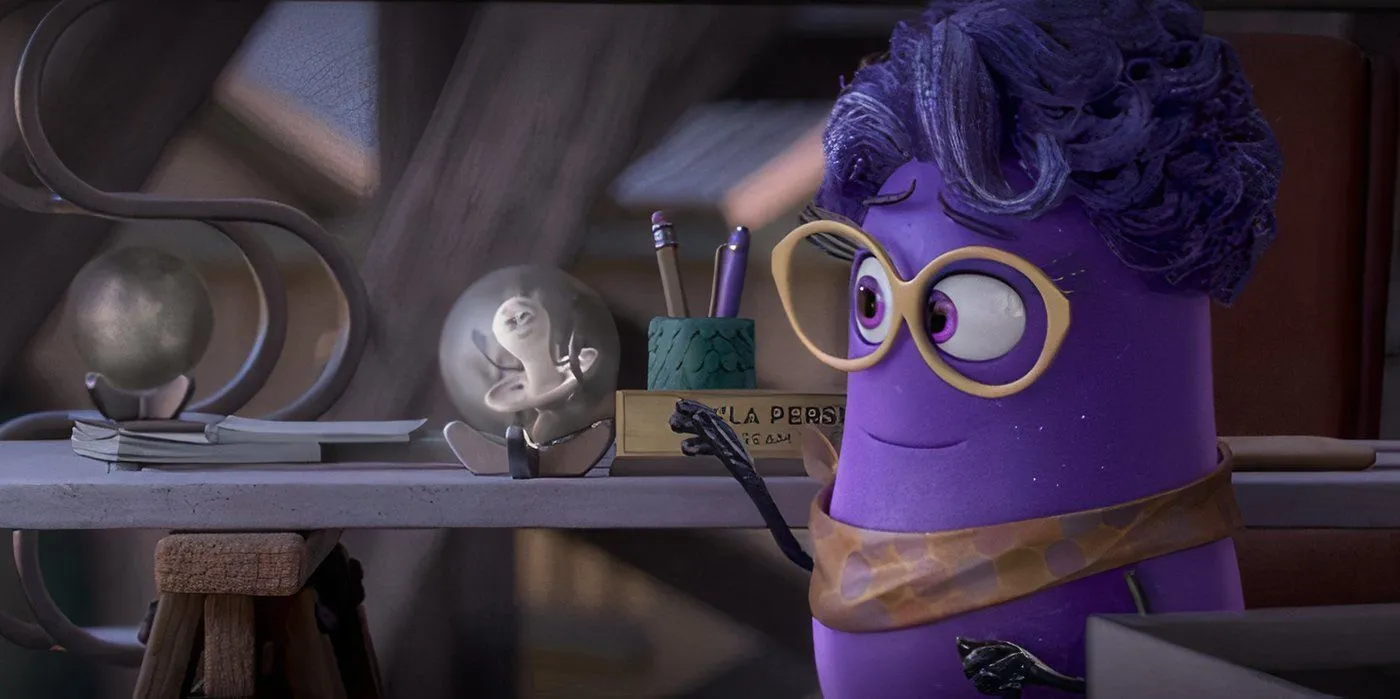
This article contains spoilers for Dream Productions, currently available for streaming on Disney+.
Dream Productions serves as a pointed critique of the film and television landscape of the 21st century. Set within the same universe as Inside Out, the narrative not only extends the timeline of this beloved film but also functions as a standalone satire on the intricacies of film production. The series shrewdly lampoons various facets of the film industry while also delving into the emotional consequences faced by the creators behind the stories that engage both Riley and real-world audiences.
One of the more poignant shifts from Inside Out to Dream Productions is the exploration of memory and loss. The existence of characters and memories in the Inside Out universe can vanish when forgotten, a theme poignantly illustrated through Riley’s imaginary friend, Bing Bong. This loss is a critical element of the narrative in the original film but takes on a more significant role in Dream Productions. Here, the concept of memories fading mirrors the real-world challenges associated with preserving artistic works and ensuring their accessibility.
The Fragility of Art and its Ephemeral Nature
Creatives Coping with Loss in Dream Productions





An unexpectedly bittersweet theme emerges in Dream Productions through its exploration of how fleeting Riley’s cherished dreams truly are. Creatives in the show hold onto dreams only as long as they remain remembered, contrasting sharply with full memories that linger for years within Riley’s mind. Dreams, however, inevitably succumb to oblivion, evoking the same sorrowful fading of Bing Bong from memory in Inside Out.
Paula, one of the Dream Directors, embodies this struggle. Other minor characters also hold aspirations of becoming directors, but they too are subject to the heartache of forgotten dreams. The loss of these dreams, while often played for comedy, highlights a significant emotional impact on the creators—Paula experiences profound grief when her defining dream dissolves into nothingness. In this way, Dream Productions intriguingly juxtaposes its childlike satire of the entertainment industry with a realistic representation of creative loss.
Lost Dreams and the Loss of Art in Modern Cinema

Art possesses a delicate power—capable of evoking emotion and costing millions, yet vulnerable to vanishing due to a single decision. This vulnerability is especially pertinent in the realm of film and television. Many early cinematic works have been lost over time, while contemporary films face an uncertain fate under the control of streaming platforms and studios. Productions like Batgirl, Scoob! Holiday Haunt, and Coyote vs. Acme have been shelved indefinitely. Furthermore, streaming services are increasingly removing popular shows from their catalogs.
The decline of physical media releases and the waning market for DVDs and Blu-rays has led to the loss of countless hours of dedicated artistic endeavor. This scenario parallels the ephemeral nature of dreams depicted in Dream Productions, reflecting proud memories and remarkable stories that can disappear due to unseen forces within entertainment studios. The heartbreak Paula feels as her defining dream fades away resonates deeply with the experiences of real artists facing similar losses.
The Deeper Meaning of Dream Productions’ Commentary on Art
The Legacy of Impact in the Face of Loss

Throughout Dream Productions, the emotional toll resulting from the loss of art profoundly affects characters like Paula. At her lowest point, she grapples with the reality that losing dreams to memory diminishes her ability to inspire Riley with storytelling. However, during a lucid dreaming sequence, Paula engages with Riley and assists her in overcoming her uncertainties. Although Riley forgets the dream, Paula derives pride and solace from the emotional impact it has on Riley.
The narrative underscores a bittersweet truth about artistic creation: the loss of a work does not erase its emotional resonance. The fundamental aim of storytelling is to forge connections, and although the specific artwork may fade away, its influence can endure. This realization, while only partially alleviating the sting of art’s disappearance, affirms that elements of the art persist within those it has touched. Dream Productions beautifully illustrates how the poignant aspects of modern entertainment can coexist with the enduring legacy of impactful filmmaking that transcends digital availability.




Leave a Reply